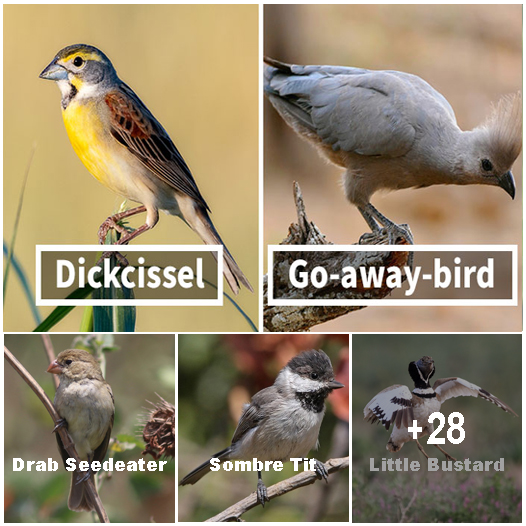
Chim có lẽ là một trong những chủ đề hấp dẫn nhất của vương quốc động vật. Chắc chắn, sư tử và hổ thường trông hoàng gia, và những con thỏ nhỏ rất dễ thương và đáng yêu. Nhưng với chim, bạn thường không biết mình đang nhận được gì. Có rất nhiều loại đủ để khiến bạn quay tròn — những con chim nước dành phần lớn cuộc đời để nổi, những con chim có đôi cánh hoàn toàn là trang trí và chúng phải vật lộn để lên khỏi mặt đất; Có những con nhỏ với màu sắc đẹp và những con chim khổng lồ trông giống như một đám mây bão có tri giác. Và sau đó có một số rõ ràng đã gánh chịu gánh nặng của số lượng loài tràn ngập, và điều đó được phản ánh rõ ràng trong tên của chúng.
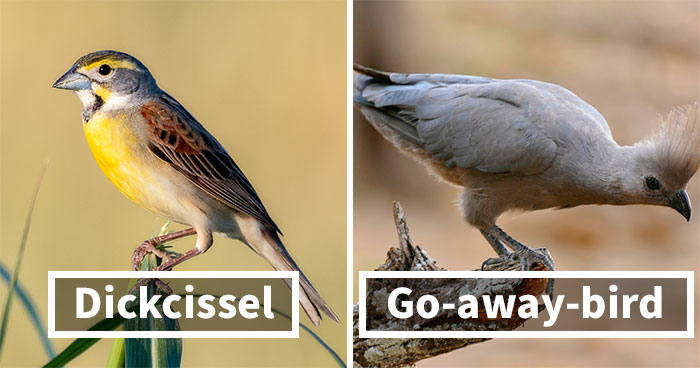
Người dùng Twitter stu_bot3000 đã tạo ra một chủ đề lan truyền về các loài chim dường như được đặt tên bởi những người không thích chúng, vì các nhà điểu học nghèo có thể đã hết những cái tên nghe có vẻ hùng vĩ và phải giải quyết (nhưng ít nhất bây giờ chúng ta biết rằng các meme “bạch dương” chắc chắn có đủ nền tảng). Với 73,4 nghìn lượt xem và 19 nghìn lượt retweet, cuộc thảo luận về tên của các sinh vật có cánh đã bắt đầu diễn ra.
# 1 Satan Nightjar
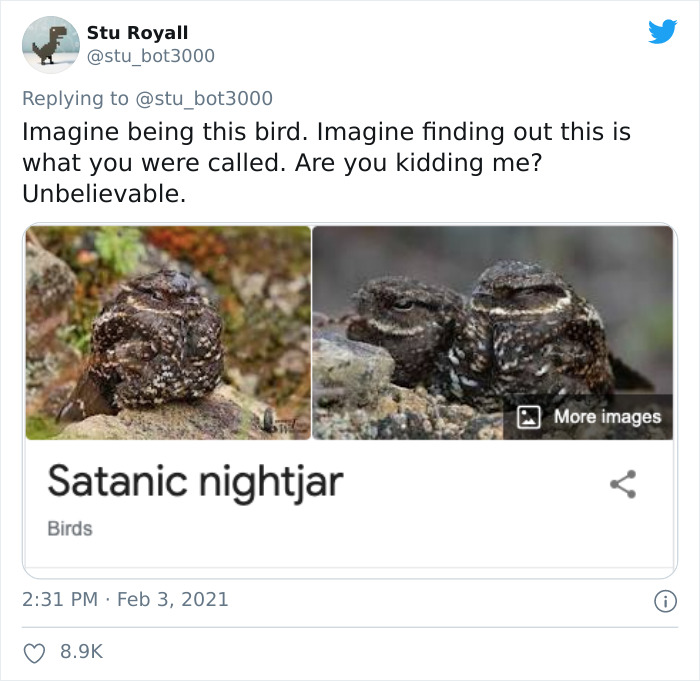
Bất kể tên là gì, những chiếc lọ đêm của Satan không điều hành các giáo phái hoặc hiến tế. Nó chỉ là một con chim đốm màu nâu xám, cỡ trung bình. Nó được phát hiện khoảng 90 năm trước ở Sulawesi (và sau đó được phát hiện lại vào năm 1996). Nó được đặt tên bởi vì người dân địa phương tin rằng nó là một thực thể ma quỷ do âm thanh mà nó phát ra vào ban đêm.
# 2 Boobies

Boobies là loài chim có thể được chọn ra cho đôi chân màu xanh sáng của chúng (một đặc điểm chỉ con đực có, và chúng càng xanh thì càng tốt!). Bàn chân được sử dụng để thu hút bạn tình tương lai bằng cách thực hiện một thanh chống bước cao, vì vậy loài này kết hợp một màn trình diễn với hình ảnh.
# 3 Bức tượng bán thân nhỏ
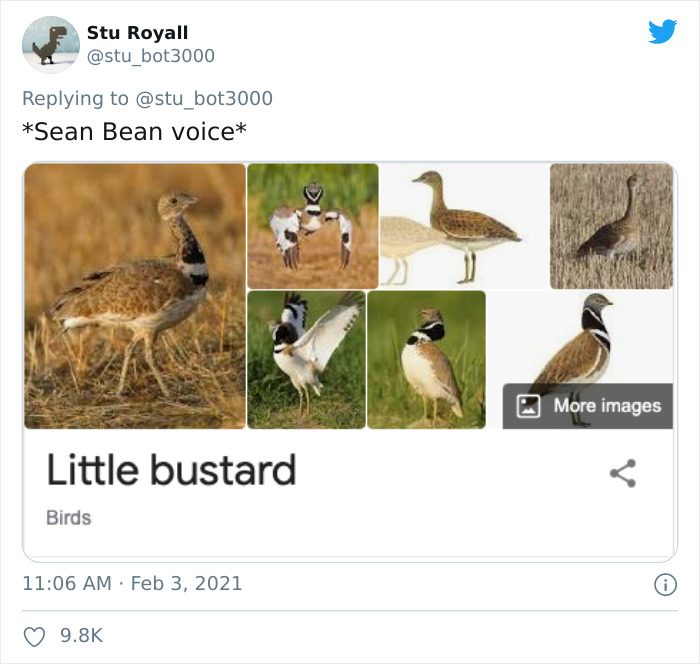
Little bustards are one of the larger birds on this list, despite what its name might suggest. Usually fairly quiet and unobtrusive, males preparing for breeding have distinctive plumage with a black neck and double V-shaped white collar. However, the population of these birds is decreasing.
#4 Dickcissel
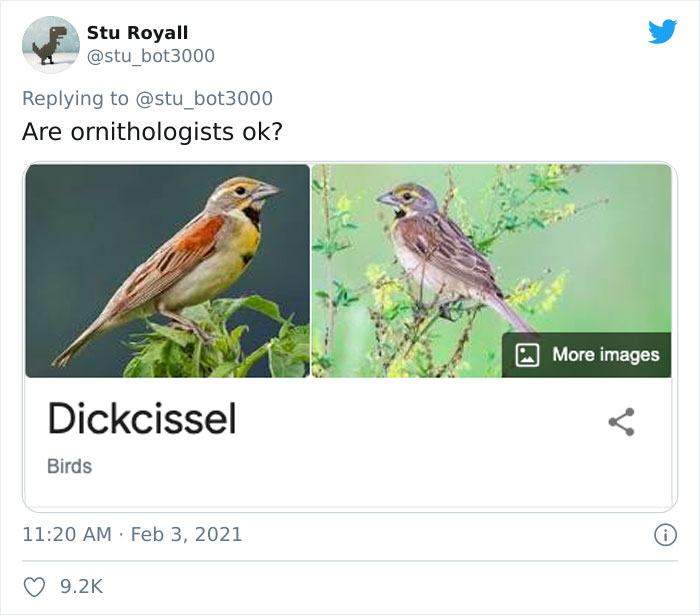
Dickcissels typically can be found in the North American prairies. They eat seeds and are ground foragers, and when it’s time to migrate, they can flock in large numbers, sometimes reaching thousands, and while wintering, those flocks can number in the millions.
#5 Tiny Sky-Tyrant
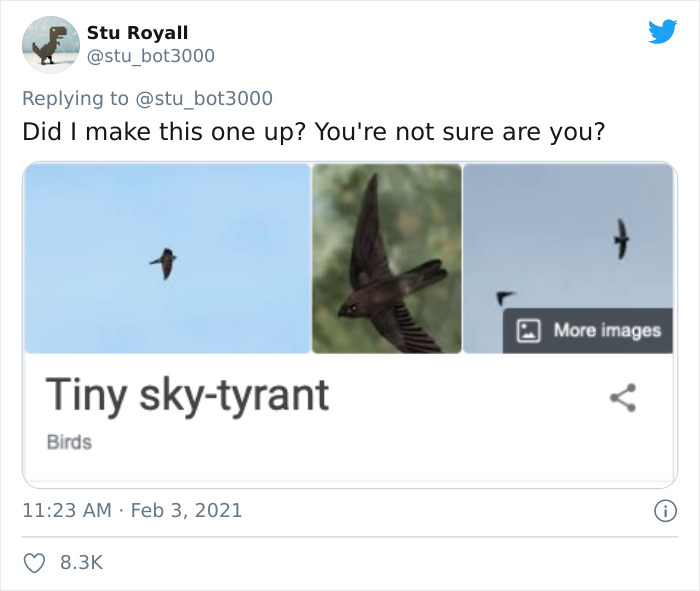
#6 Go-Away-Bird
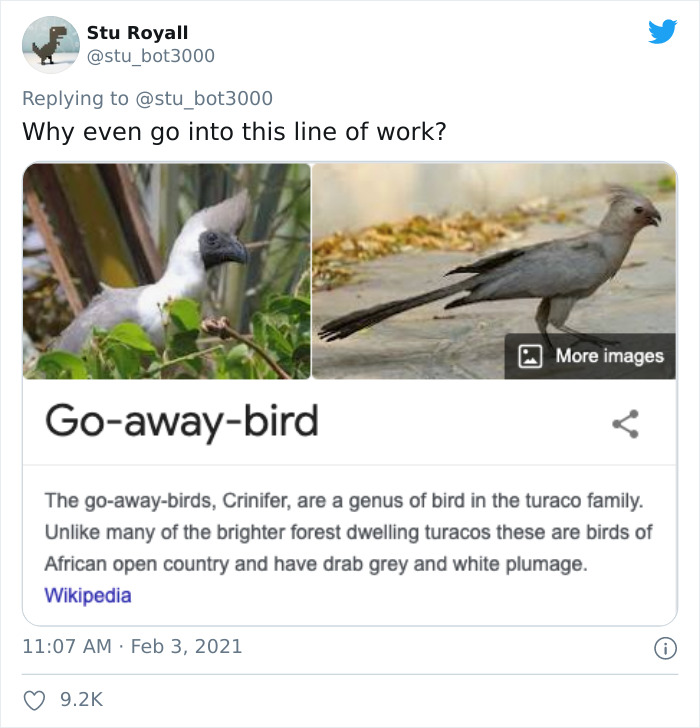
Go-away-birds are known for their long tails that flop up and down while in flight. They tend to stick to small groups and like to perch on trees and bushes. But their name comes from their nasal sound that sounds very much like “go-waaay,” which earned them the name.
#7 Penduline Tit

Penduline tits live up to their name, making elaborate bag nests which they hang from trees near water. They even use spiderweb, animal hair and soft plant materials to create the nest. The construction even has a false opening that leads to a false chamber, and the true interior of the nest is hidden behind a secret door.
#8 Horned Screamer

National Geographic aptly titled horned screamers the unicorns of the bird world. It’s the only horned bird in the world, but the horn is not used for fights—it’s only ornamental. The horn is loosely attached and will snap off when it grows too big, and then later, it grows back.
#9 Fluffy-Backed Tit-Babbler
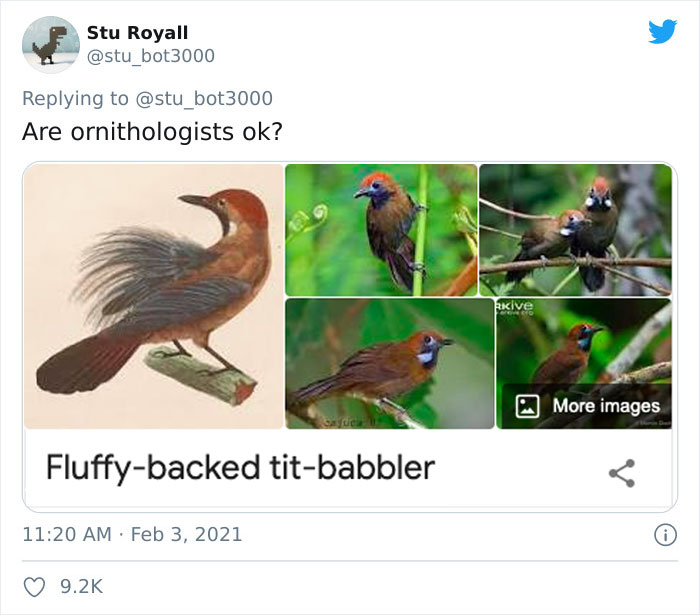
The fluffy-backed tit-babbler is a near-threatened species found in Brunei, Indonesia, Malaysia, and Thailand. Their preferred habitats are facing deforestation or similar forms of conversion, causing the species to decline.
#10 Sad Flycatcher
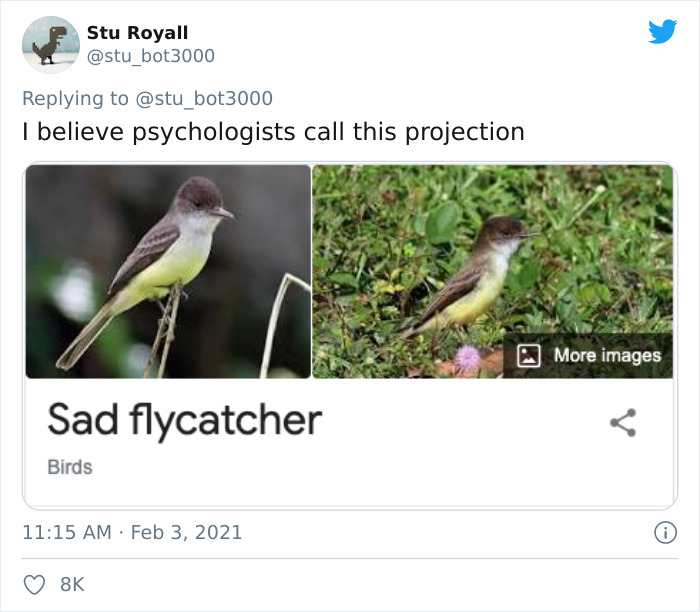
Despite the name, the sad flycatcher is not sad in any way. It does have a small bill, but that’s not enough to discourage this woodland species. These birds are native to Jamaica and prefer to stick to various forests.
#11 Smew

Smews are diving ducks that live in northern Europe and Asia. They are migrating birds, meaning they will leave their natural habitat to spend winters somewhere else in order to escape colder climates. It is male smews that have the distinct white-and-black plumage.
Tiny sky-tyrant
#12 Sombre Tit

The sombre tit lives in southeast Europe and southwest Asia. These birds make their nest in the holes of the trees, such as juniper or willow, and they lay eggs twice a year. The species also appears to be somewhat stationary, with slight local movements, and they don’t migrate half a world away.
#13 Typical Swift
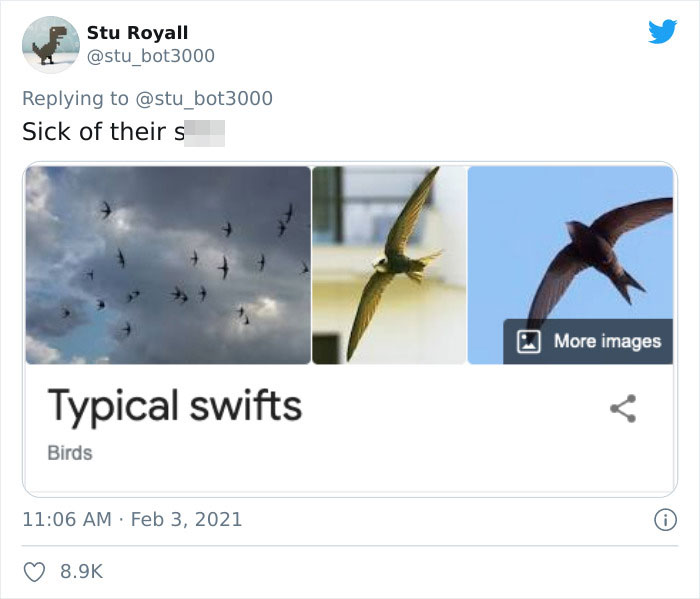
The typical or common swift follows its name to the letter. Their feathers are in dark colors, with no outrageous features, but it lives up to the swift title, spending as much as ten months per year in continuous flight. Germans even call this bird “wall-glider” as a tribute to its ability to cling to vertical surfaces.
#14 European Shag

European shags can be found in western Europe and northern Africa. There are three subspecies: living in the north (like Iceland), in mild climates (such as the central Mediterranean), and those preferring warm weather (like the coasts of northern Africa).
#15 Rough-Faced Shag

The rough-faced shag is a rare species from New Zealand. For close to 200+ years, their small population was confined to four islands in the Marlborough Sounds area, and due to this, these birds are considered vulnerable. And instead of exquisite singing, this bird lets out croaking noises.
#16 Common Loon
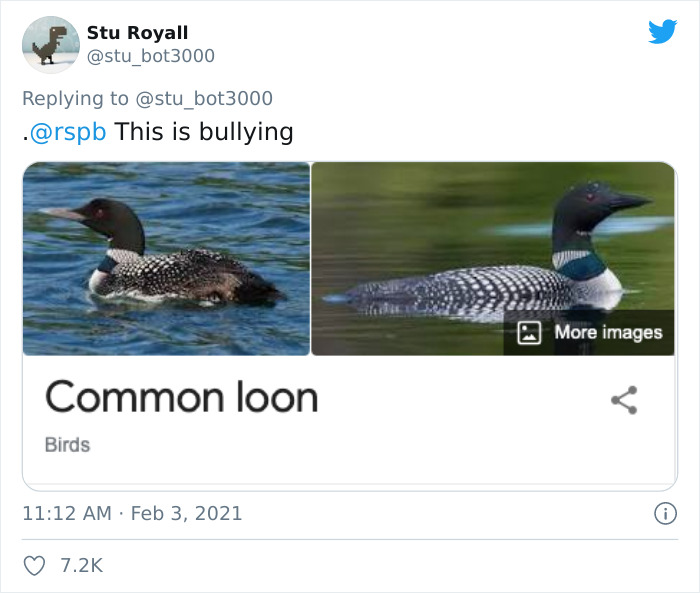
Common loons are water birds, often found near coastal waters. They catch fish underwater, using their feet as a propeller. They are fast swimmers and equally fast fliers and can reach speeds of 70 mph. Fun fact: in order to fly, these birds need to have a running start, not unlike a plane that’s about to take off.
#17 Red-Rumped Bush-Tyrant

The red-rumped bush-tyrant can be recognized for its dual coloring. The upper body of the bird is gray, while the belly is bright. It also has extensive rufous webbing on the tail feathers. The species likes a humid environment with plenty of trees.
#18 Noisy Pitta
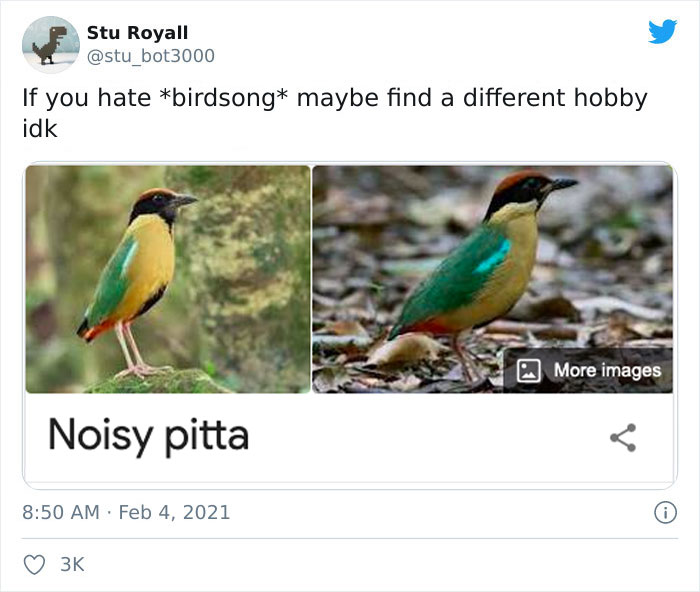
The noisy pitta can be found in areas of Australia and New South Wales. They are known to use anvils (which can be a polished stone stuck in the ground, a tree stump, or even a broken bottle) to break up food such as snails, which are some of their favorite foods. Some anvils can be used for years, like a long-lasting tool.
#19 Noisy Miner
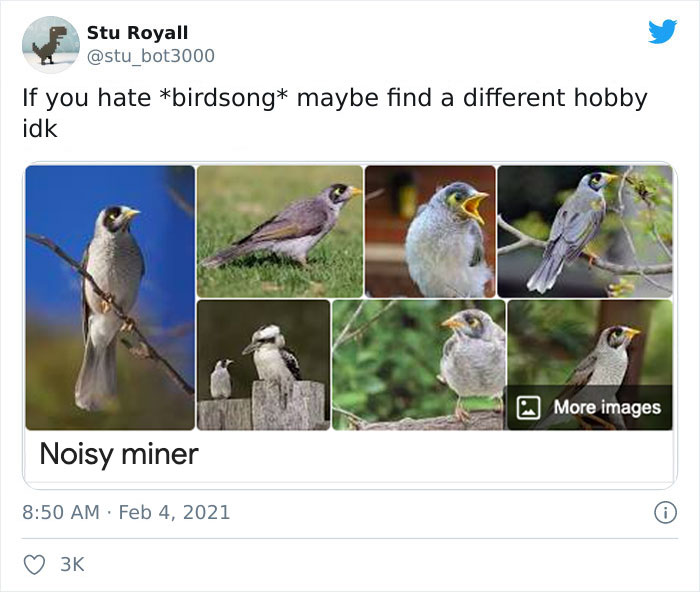
Noisy miners are not the biggest of birds, but despite that, they aggressively attack larger birds such as hawks. They stick to their aggressive strategy so much that there are very few (if any) other bird species in their territory.
#20 Spangled Drongo
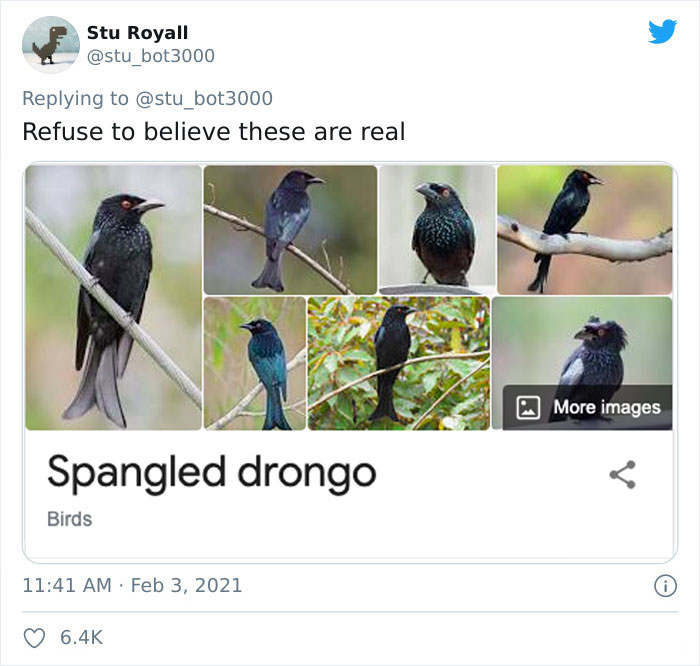
The spangled drongo has glossy black plumage with iridescent blue-green spots (spangles), hence the name. Its blood-red eyes also stand out from the otherwise dark plumage. These birds are not against working together, as often they flock together to ‘hawk’ flying insects for food.
#21 Hoary Puffleg

Hoary pufflegs are rare South American hummingbirds. They can be found in areas of the Andes and northwest Ecuador. They prefer evergreen forests at a 1,100-2,500 m altitude. Due to their limited range and declining population, they are considered a threatened species.
#22 Swallow

Swallow is a very broad name encapsulating approximately 90 species. These birds are not very big, and often have dark plumage. They are very agile and spend much of their time in the air, catching insects. They can be found worldwide, and more distinct features depend on specific species.
#23 Ruddy Pigeon
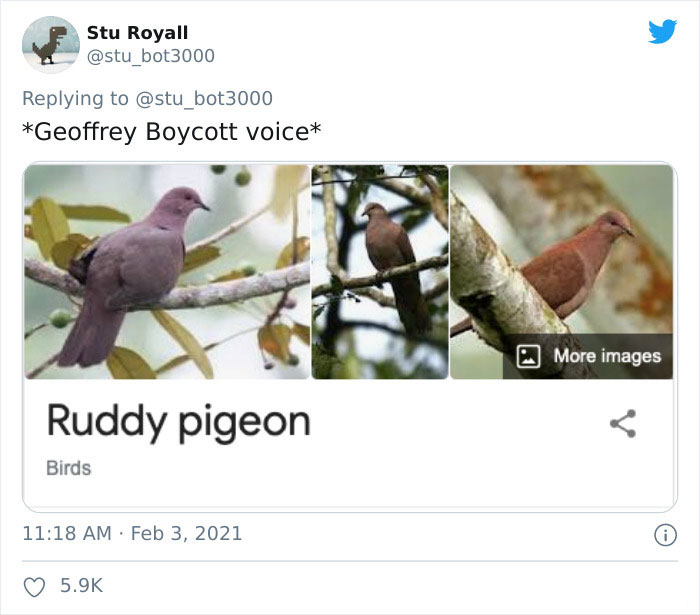
Ruddy pigeons can be found in Costa Rica, Ecuador, and Brazil, and they prefer higher, 1500-meter altitudes. They can be recognized by their unpatterned and mainly wine-purple color of the feathers. The species can often be noticed in pairs, searching for fruits and berries.
#24 Drab Seedeater
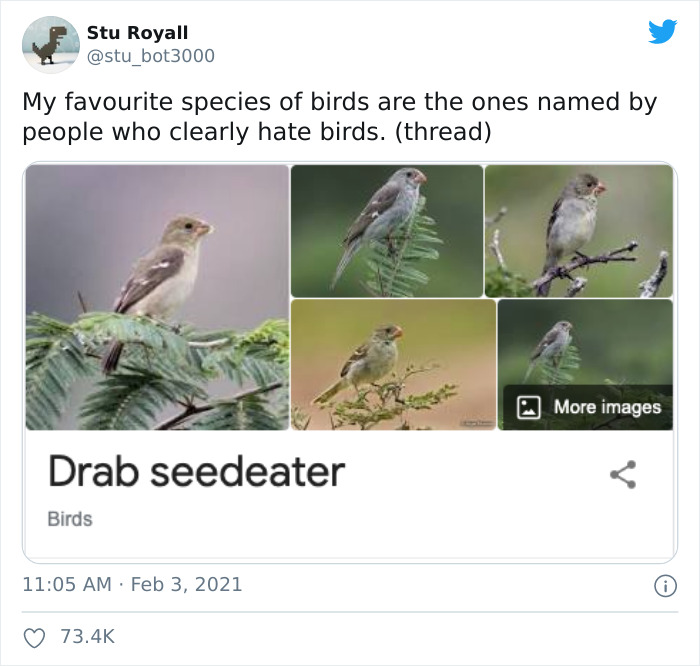
The drab seedeater is found in South America, typically in Ecuador and Peru, and luckily, they are not facing any form of extinction. They like subtropical or tropical shrublands, and the birds themselves don’t have any distinct features, hence the name “drab.”
#25 Perplexing Scrubwren

Perplexing scrubwrens live in Indonesia and Papua New Guinea, preferring moist lowland forests. The species’ perplexing name arose due to the difficulty it causes while trying to classify it, since living in some areas, this bird interbreeds with larger scrubwren species, and while living in other regions, it doesn’t display this behavior.
#26 Monotonous Lark
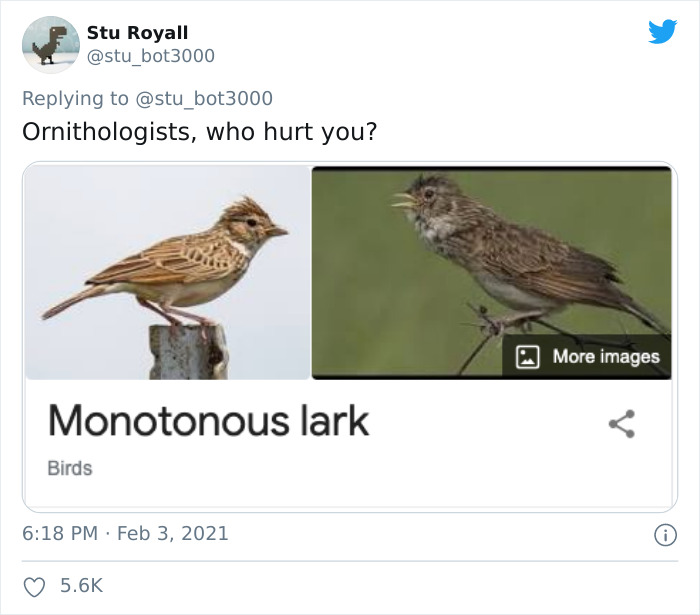
Vỏ cây đơn điệu có được tên của nó do con đực khăng khăng hát một bài hát bốn nốt đặc biệt, ríu rít, đặc biệt cứ sau 3-5 giây trong nhiều giờ, bất kể đó là ngày hay đêm. Trong khi hót, con chim sẽ phồng lên, duỗi cổ và nâng một cái mào nhỏ.
# 27 Friarbird ồn ào
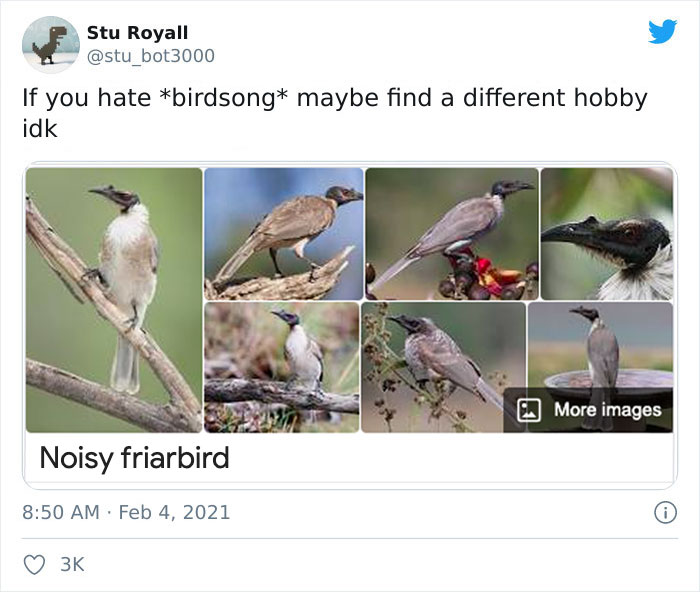
Những con chim friarbirds ồn ào đôi khi được gọi là “đầu da” vì cái đầu đen trần của chúng. Tuy nhiên, bất chấp vẻ ngoài của loài này, chúng là loài ăn mật và bạn thường có thể phát hiện ra chúng ở tán cây có hoa bên ngoài, đặc biệt là bạch đàn.
#28 Chim chà ồn ào
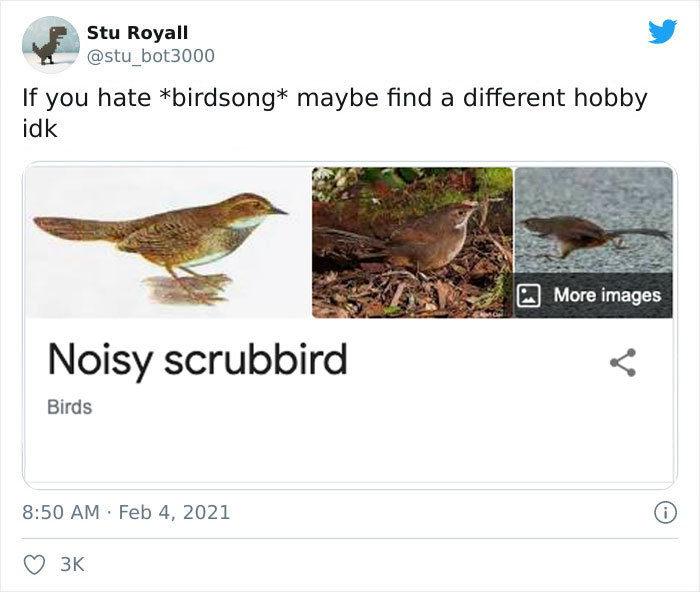
Con chim chà ồn ào đã giành được tên của nó cho bài hát lớn mà nó biểu diễn. Tiếng gọi lãnh thổ của nó bắt đầu đủ dễ chịu, và kết thúc bằng một kết thúc tách tai. Nó có thể được tìm thấy ở Tây Úc, nhưng môi trường sống của nó giảm đáng kể vì cháy rừng.